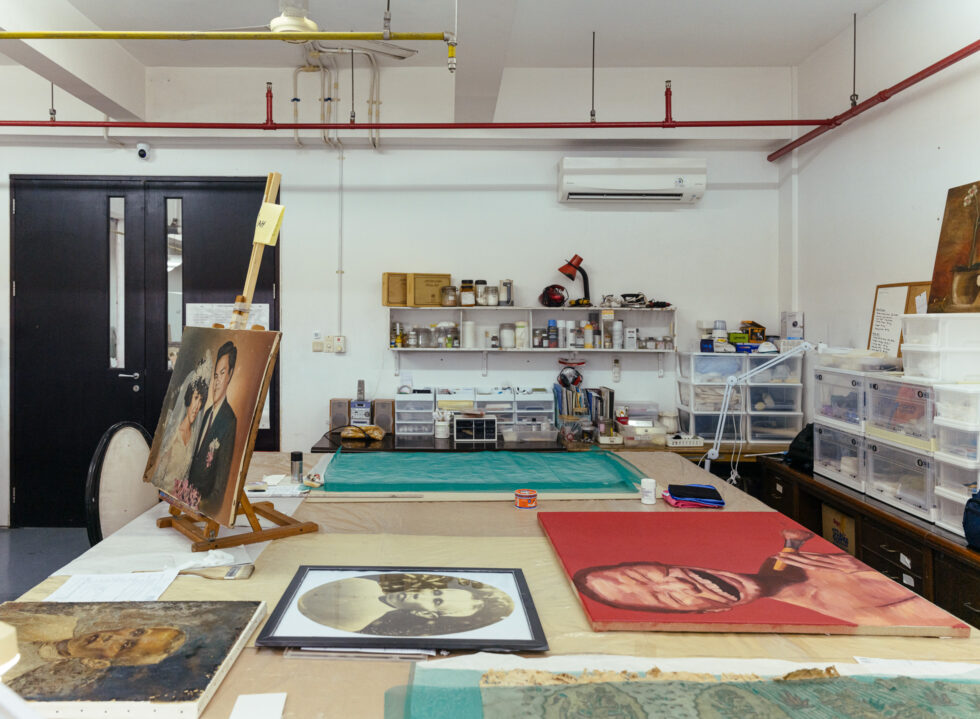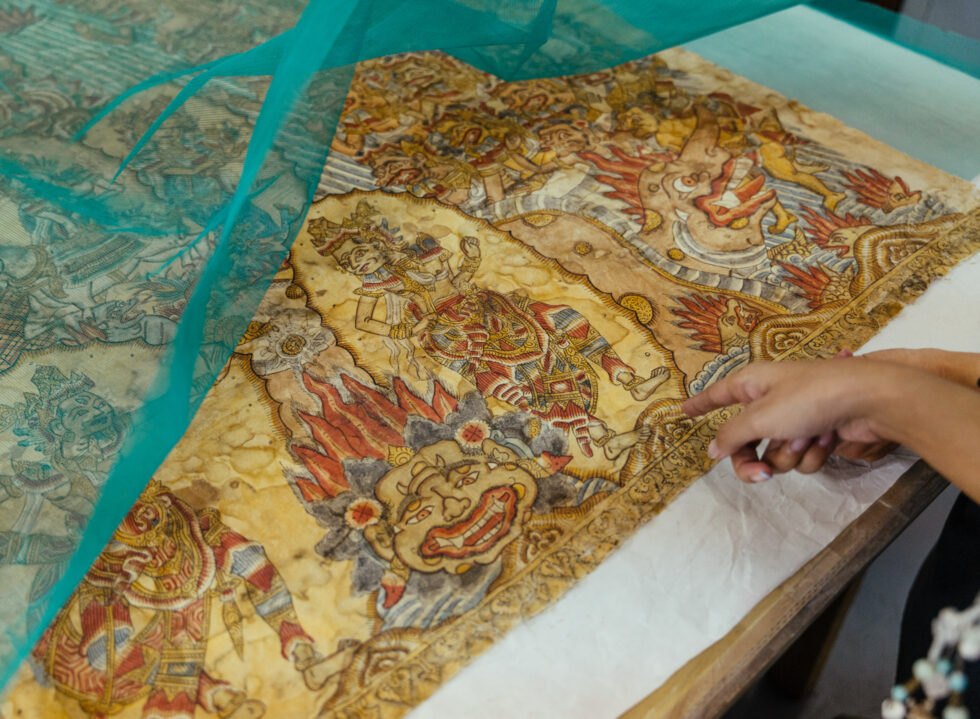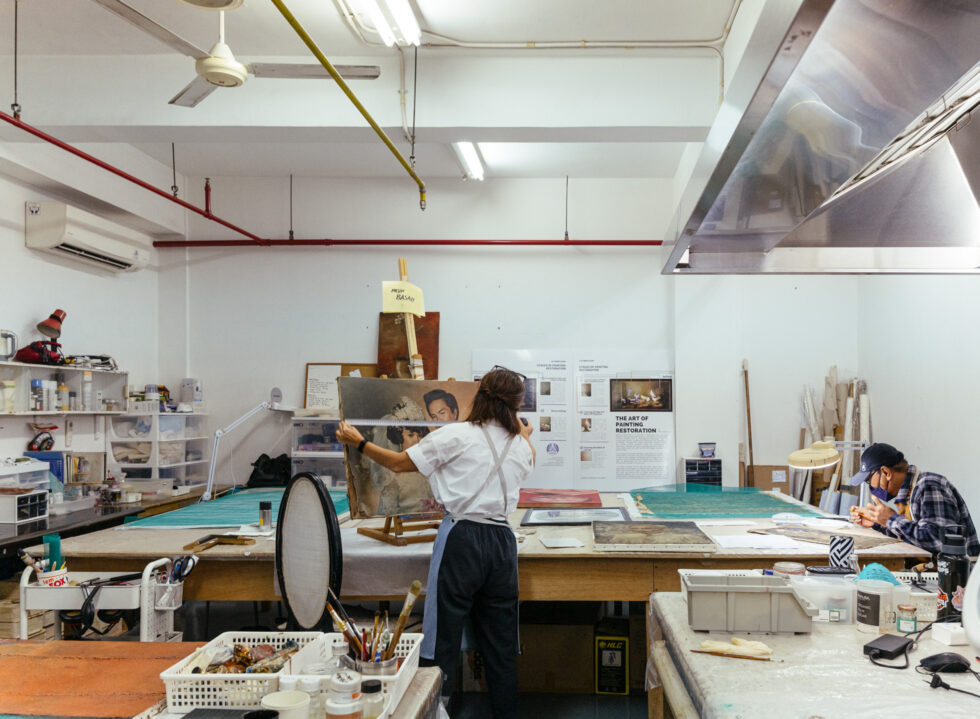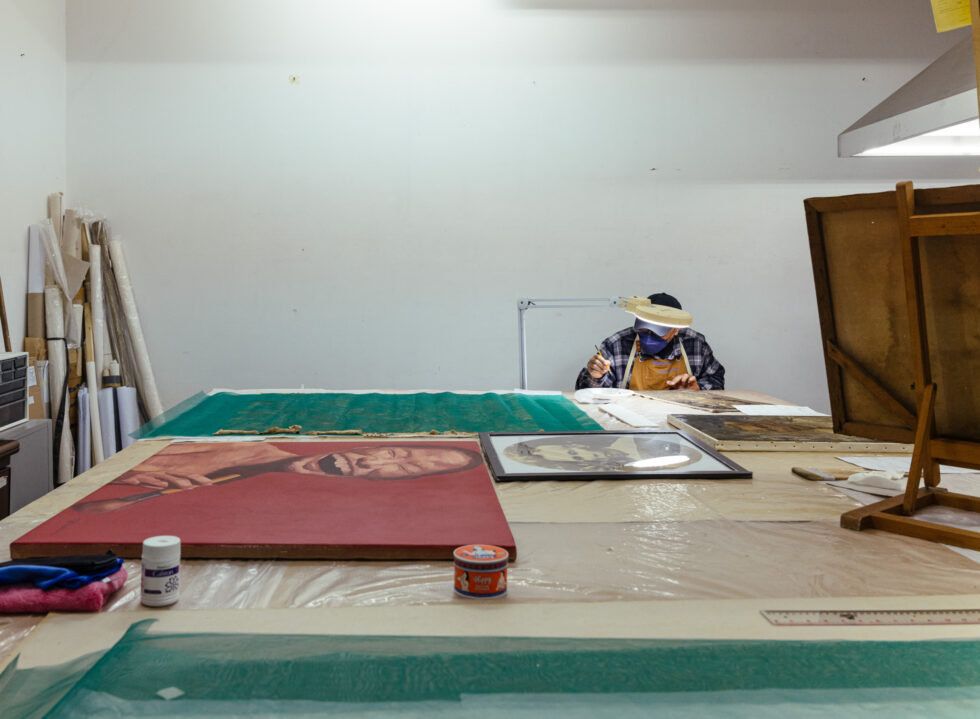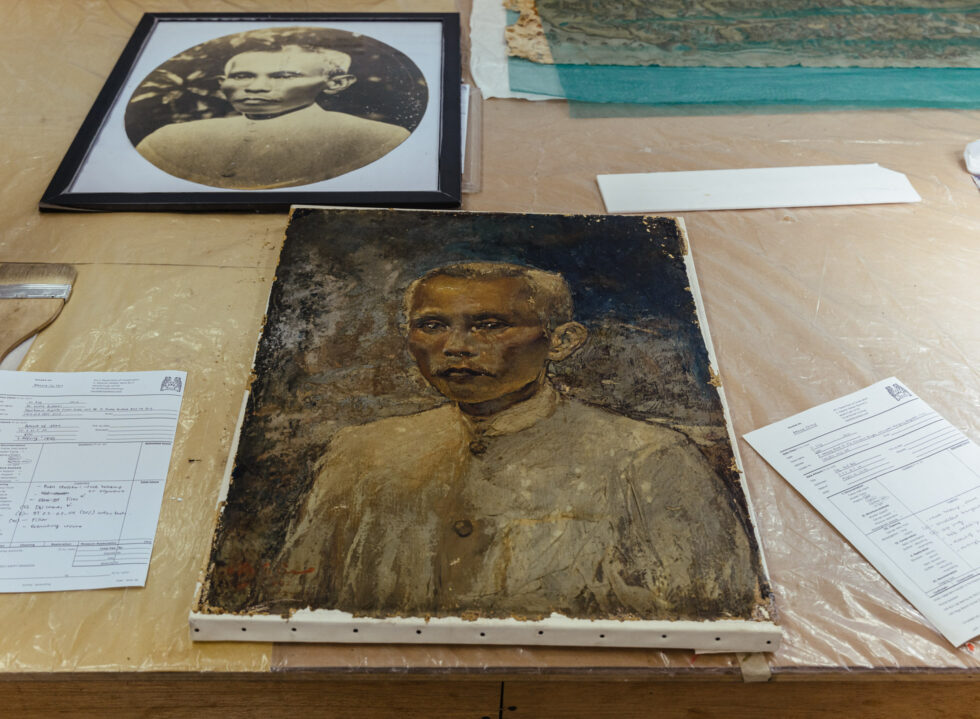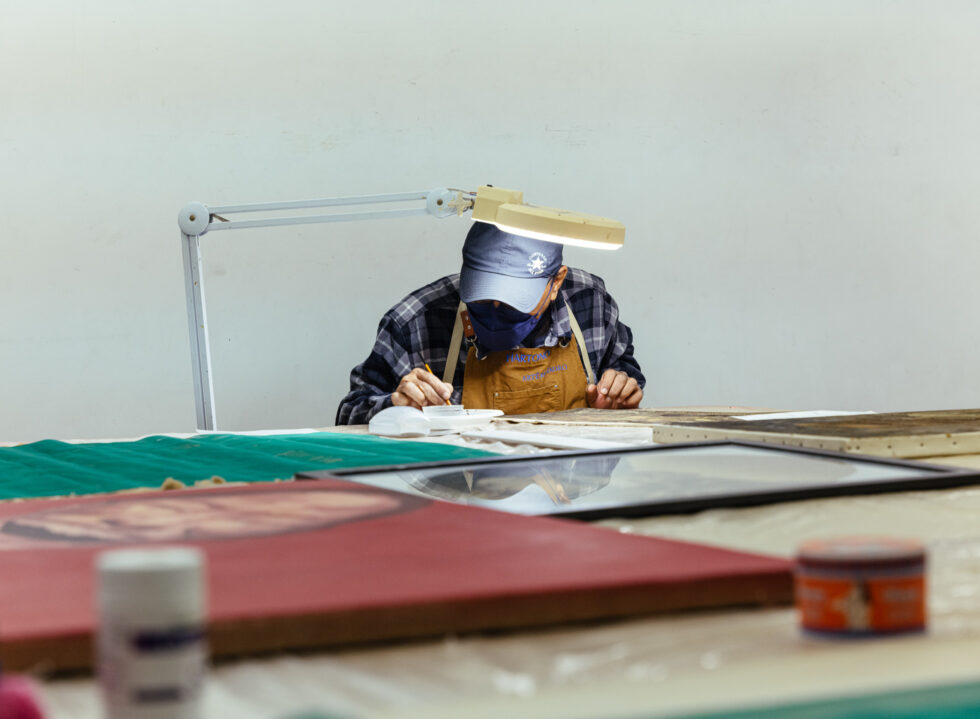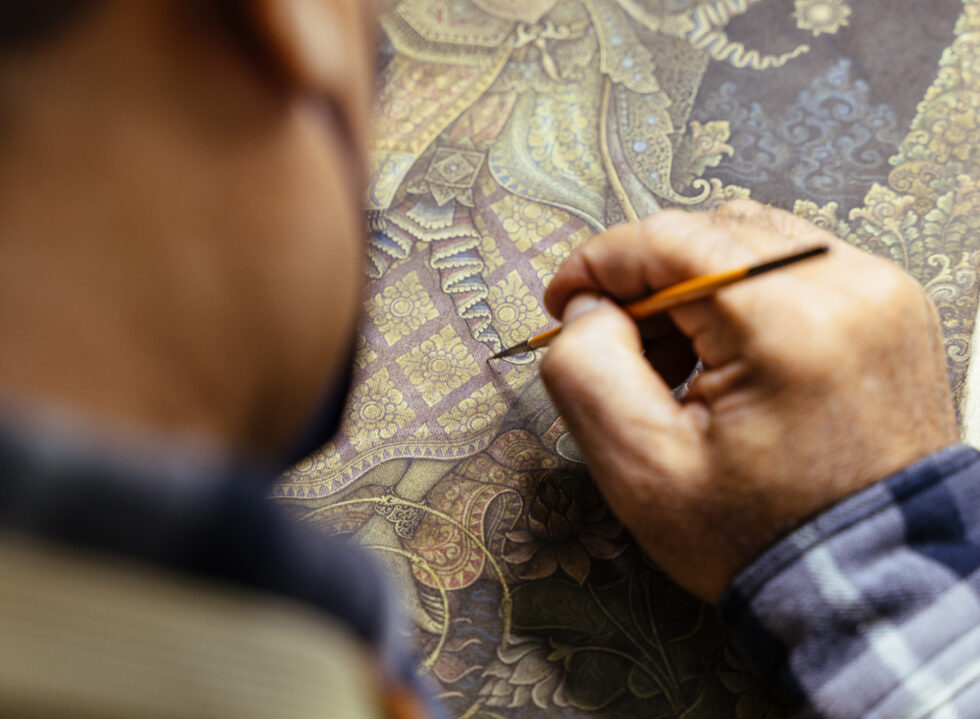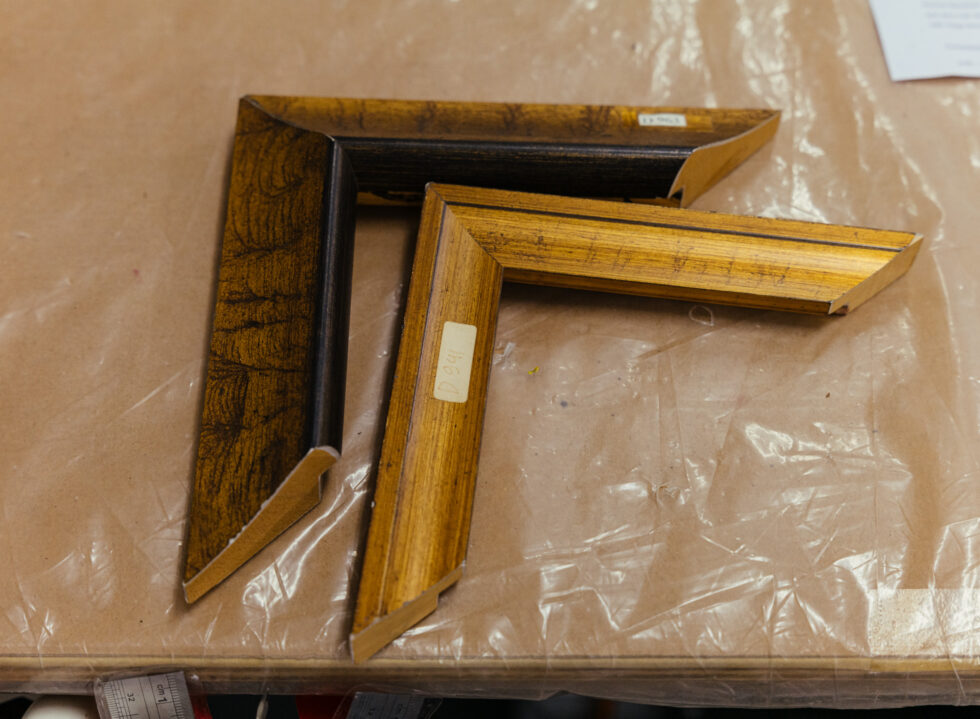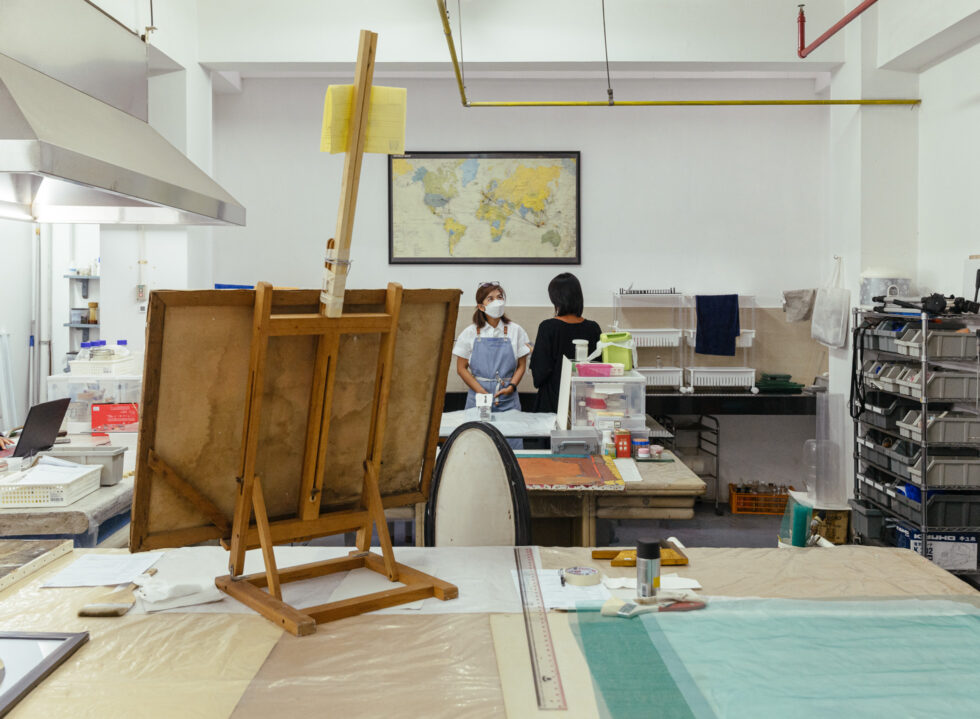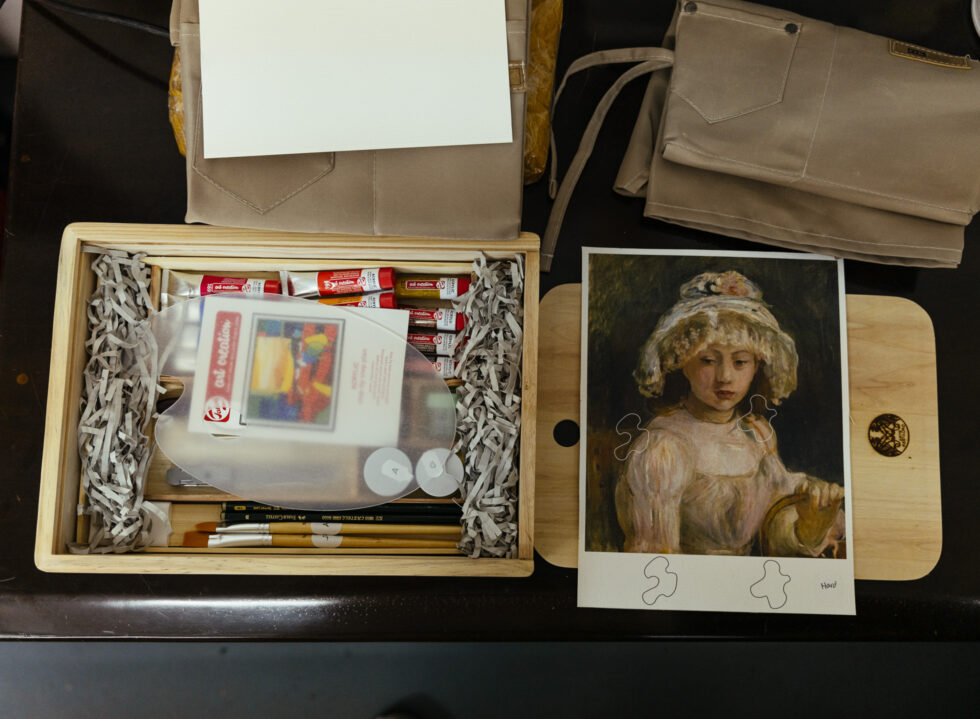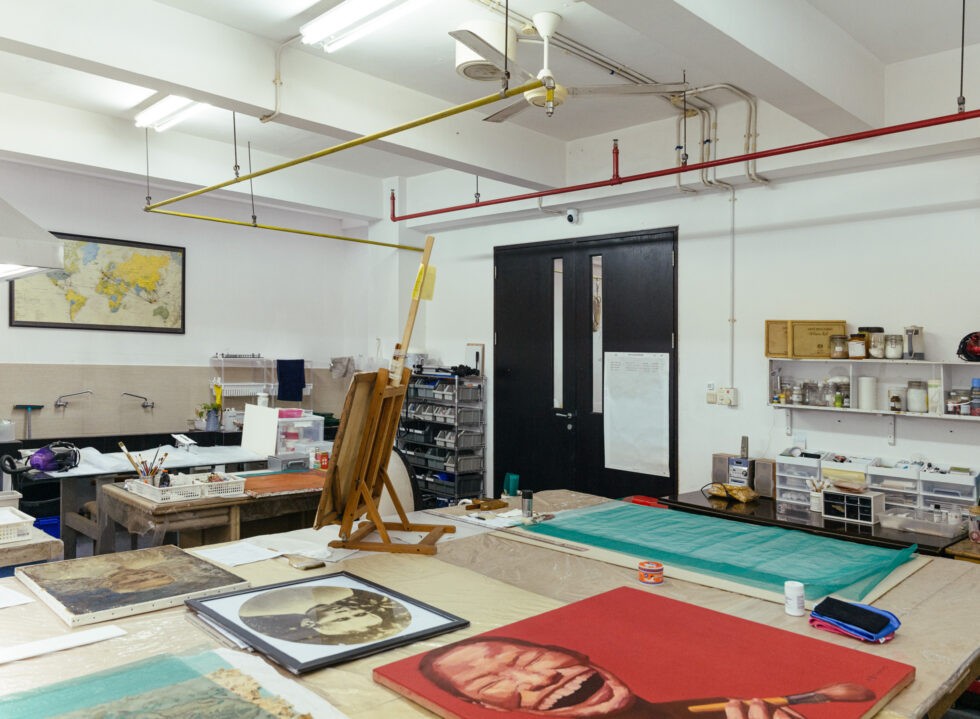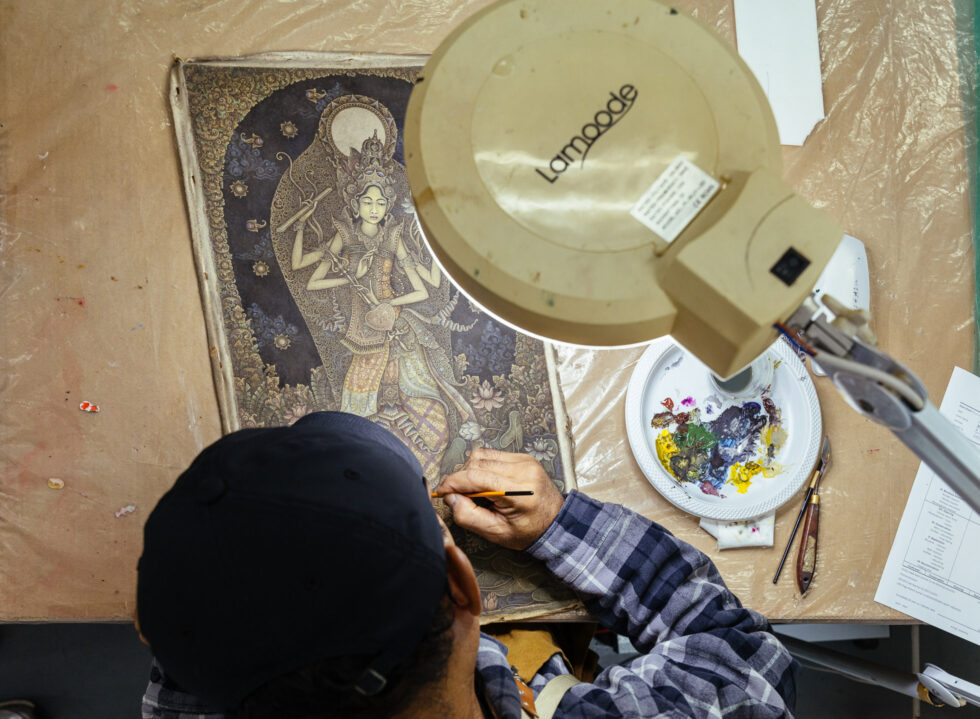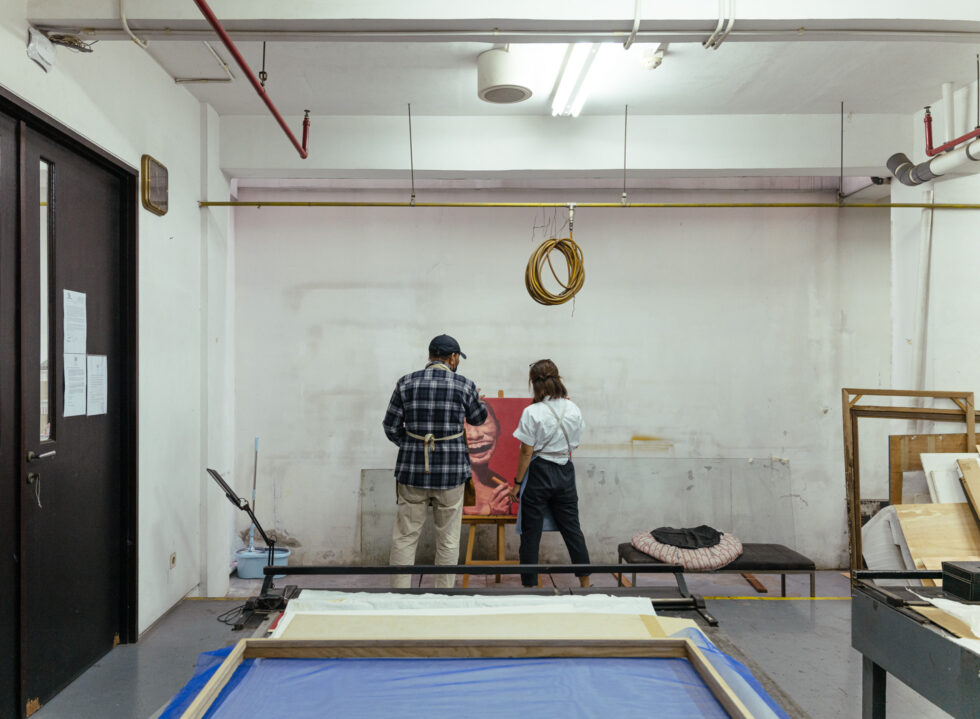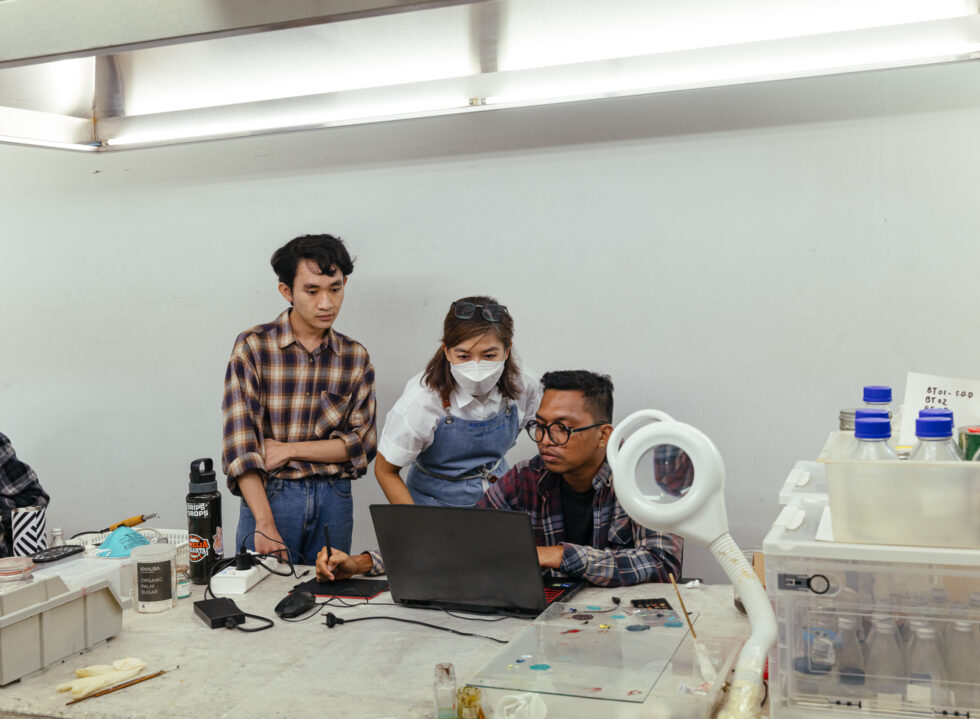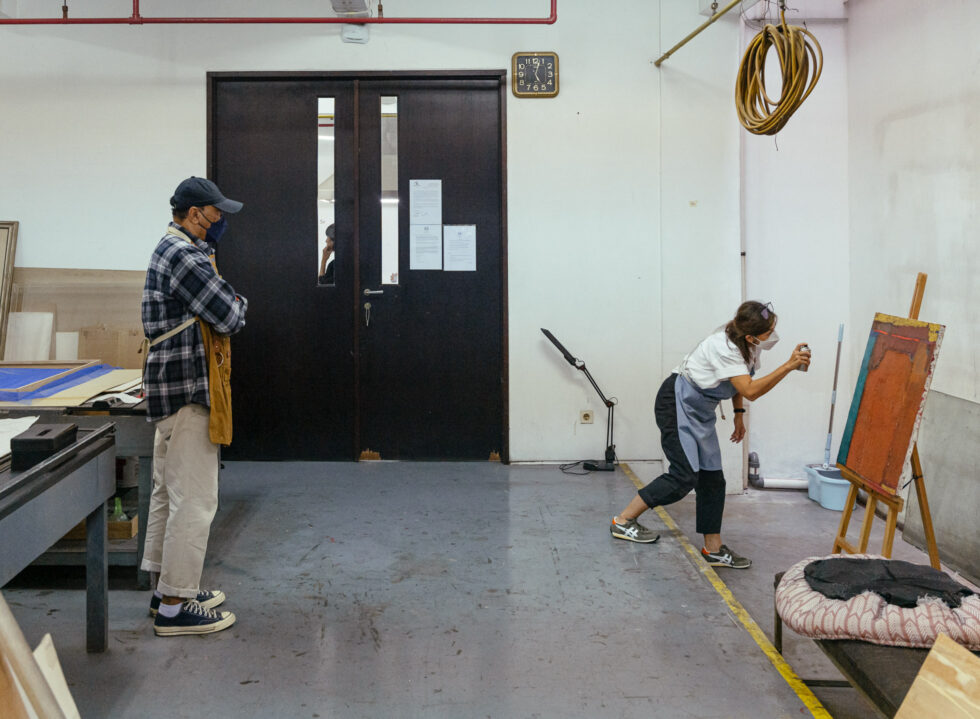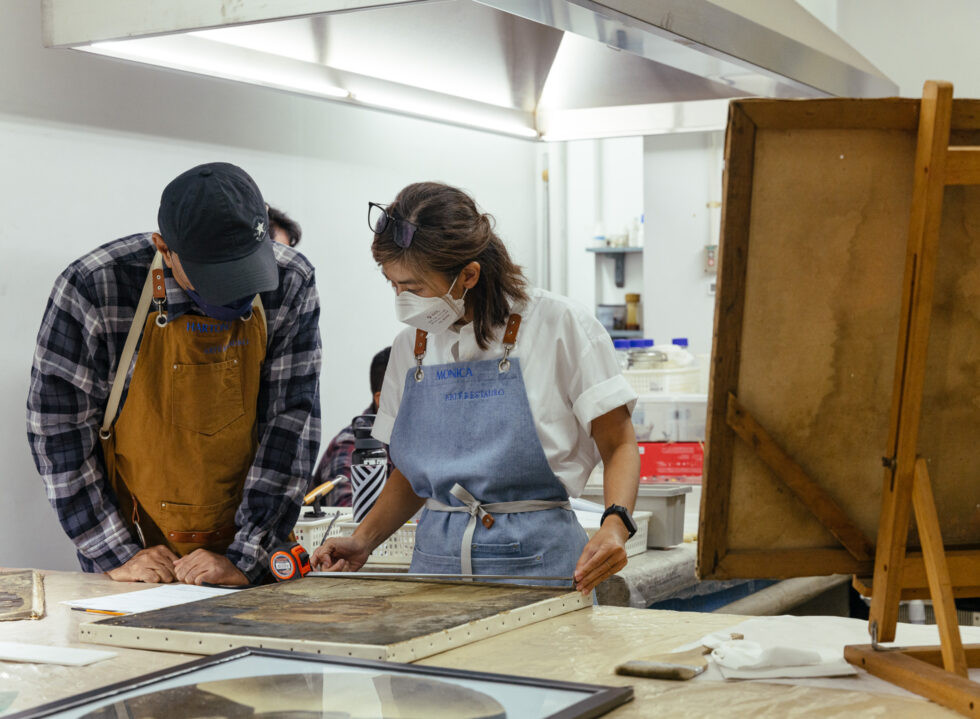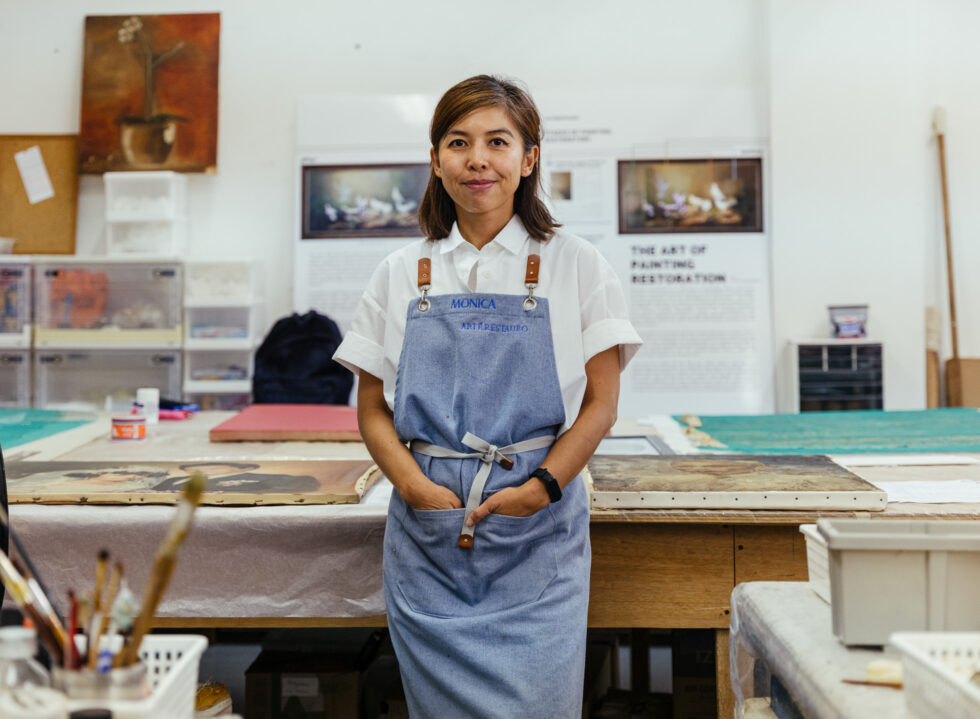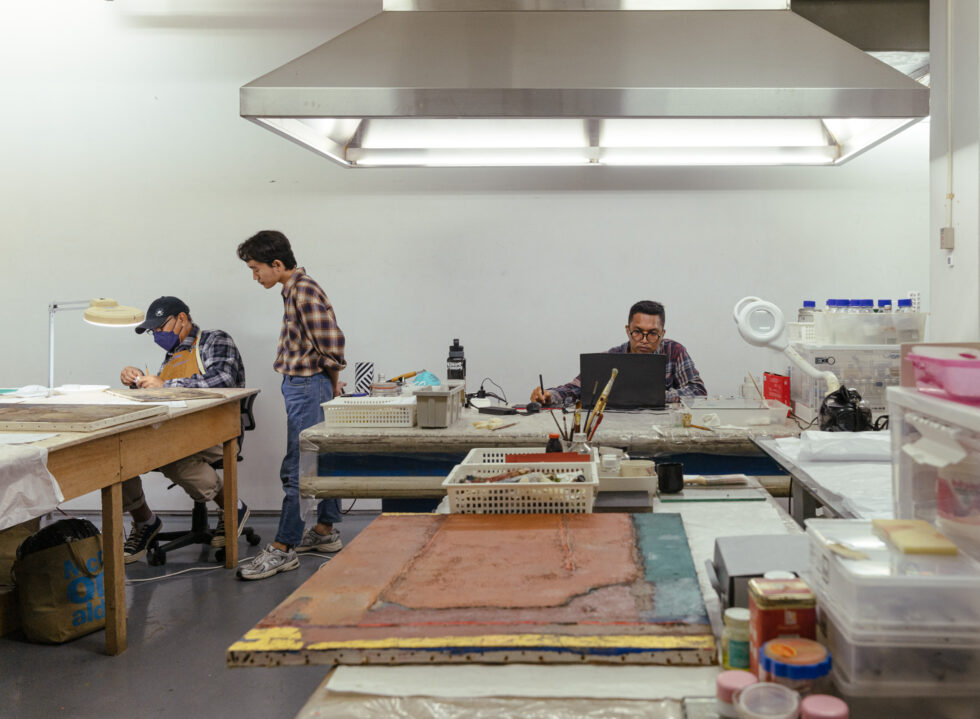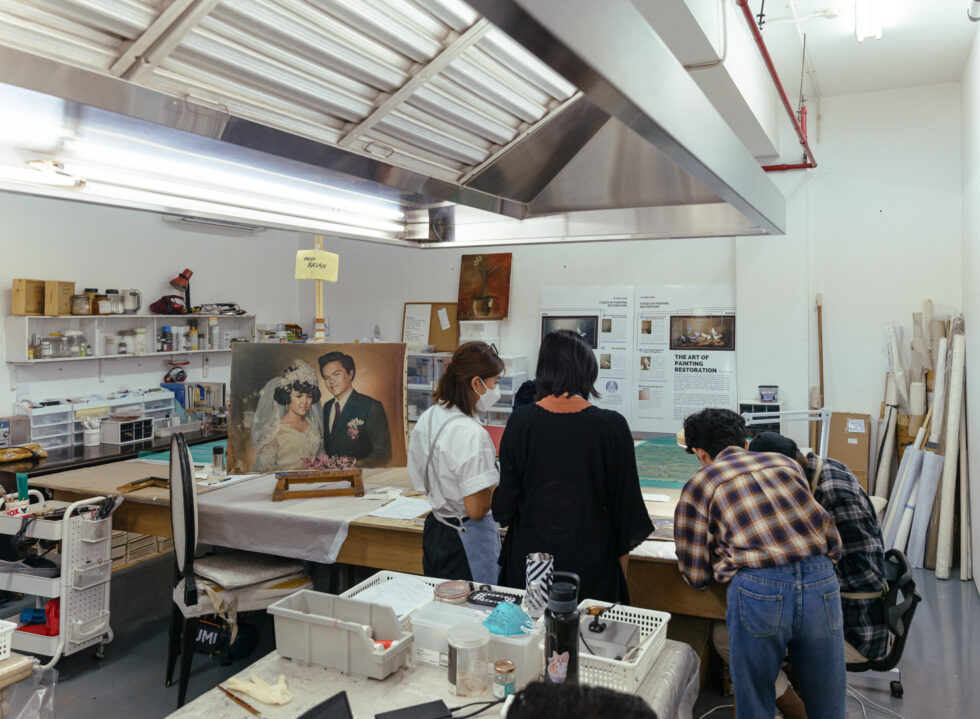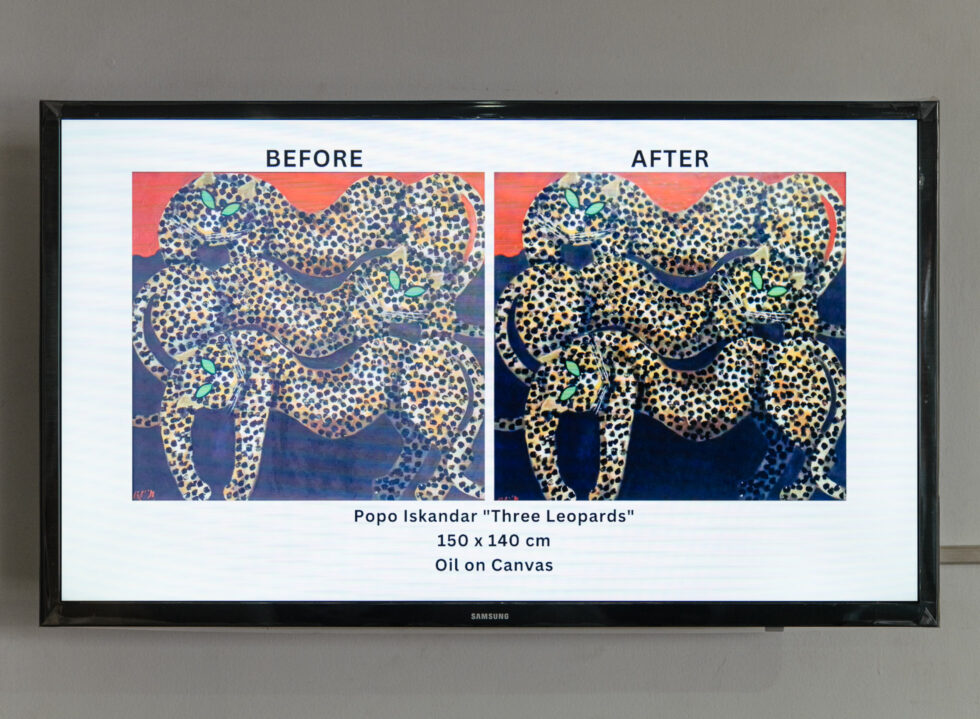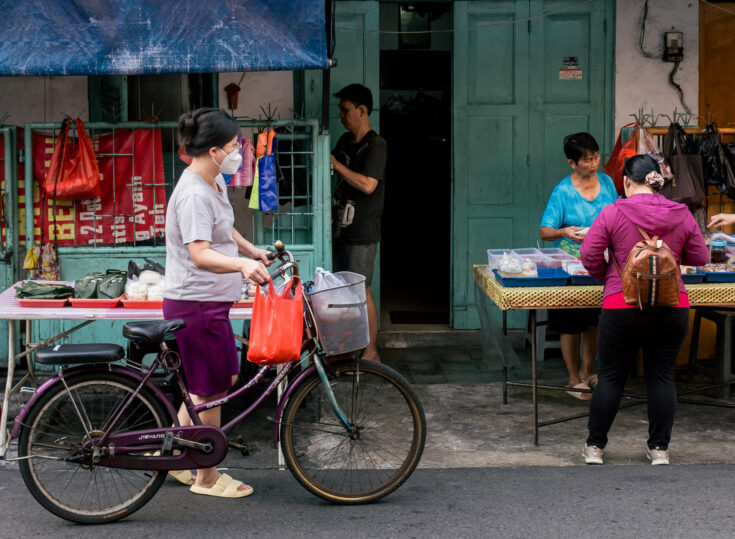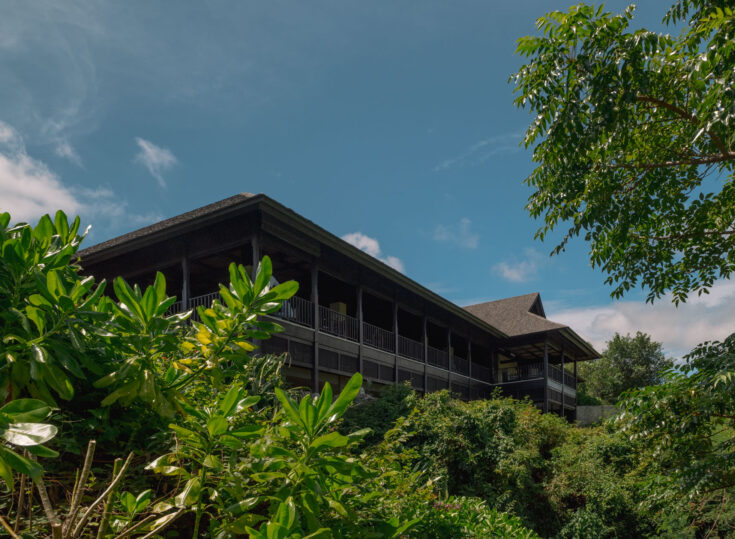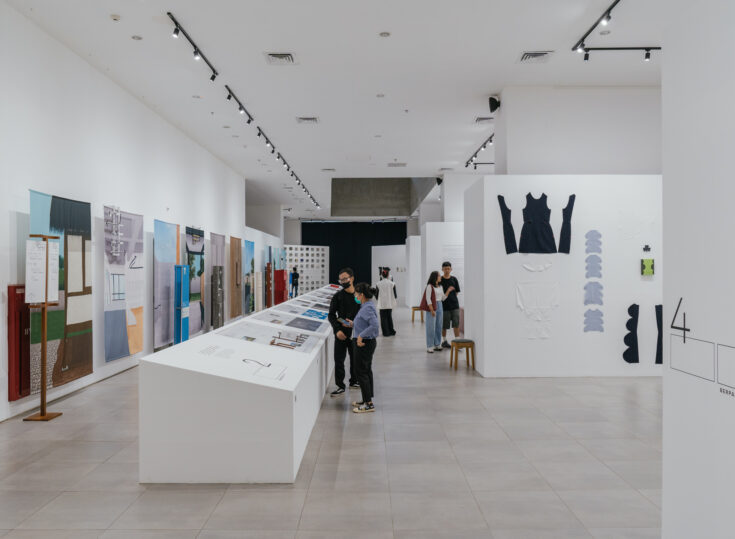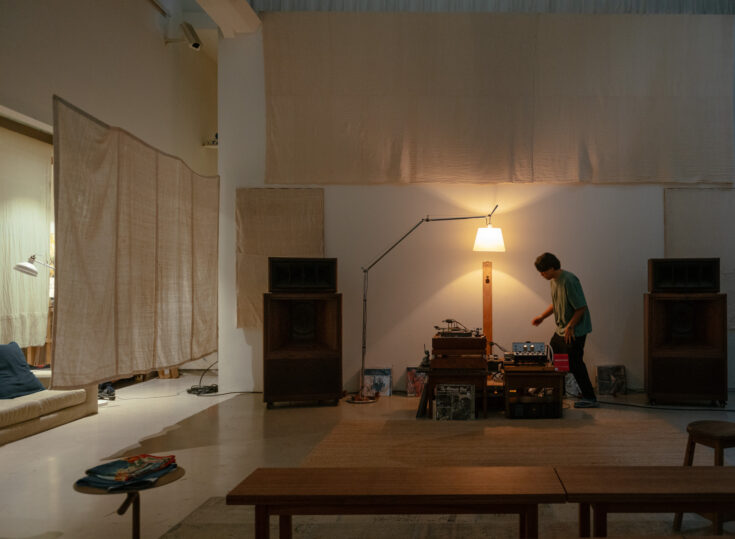When Monica Gunawan was helping Museum Penerangan (a gallery in Taman Mini that recaps the history of communication and media in Indonesia) with cataloguing their collections, she inquired to one of the staff about their most valuable item. The answer was a character figurine set of Si Unyil, a popular cartoon sitcom from the 1990s broadcasted on TVRI.
“The value is actually…not much,” said Monica, the founder of art restoration and conservation studio Arte Restauro. “But if it was supposed to be one of their most prestigious collections, there should be guards, lights—you know, that nervous feeling of excitement when you enter a space [that stores a special artwork]. Yet, they were just displayed in a room.”
Monica’s answer came from the awareness that there are some incredible works of art, dispersed across museums and institutions in the country, that have not been properly taken care of or received the presentation they deserved.
For one, in Museum Wayang, she encountered a full set of diamond-encrusted wayang (a traditional Javanese shadow puppet) from the 1300s that was simply kept in a storage room. “They’re antique diamonds. They have a different kind of shine,” she emphasised. “The collections we have are actually amazing. But the way these artworks are presented is still lacking.”
Established in 2005 under the wing of Art:1 New Museum, Arte Restauro first started as the museum’s own restoration and conservation department. Grounded in Monica’s years of museum experience and solid foundation in painting conservation, an education she took in Florence at the Istituto per l’Arte e il Restauro, Palazzo Spinelli, the studio slowly gains merit as one of the most recognised art conservation experts in the city—which, up to this day, is only a handful. During the pandemic, Monica decided to expand its clientele and grow it more as a brand.
“The more people are aware of this field, the more the industry can grow,” Monica Gunawan, founder of Arte Restauro
Situated like a secret lair at the back of the museum, the studio has been lucky enough to get a front-row seat into some of the most important, rare artworks owned by private collectors and public institutions across the country, from the revered Pablo Picasso and Salvador Dali to Indonesian maestros Affandi and Lee Man Fong.
“We’ve also restored a painting by Raden Saleh which belongs to Istana Negara (Presidential Palace), ” said Monica with a hint of pride. “It’s not an everyday thing. You cannot just find a Raden Saleh (artwork), it’s very difficult and rare.”
During the time of visit, two artisans were present in the studio; one of them was Hartono, who was delicately retouching the colours on a Balinese classic Kamasan-style painting with a fine-tip brush. “Since this is not canvas, it’s quite fragile,” said Hartono, who has worked at Arte Restauro for three years. Beforehand, the Jogja-born painter was running his own practice and teaching painting privately. “Because I’ve been painting for so long, I can intuitively identify the colours that are missing to add them in. Every work we restore has different conditions, so we treat them accordingly.”
Working between 10 to 15 paintings a month, not a single work passes by Monica. However minor the scale of treatment is, everything has to be seen and finalised under her trained eyes. “We have a checklist, so when I look at the painting, I know what needs to be done,” said Monica.
The basic first step is to clean the painting to get rid of the grime and dirt using the appropriate chemical solutions, which Monica also makes herself. Indonesia’s tropical climate also means that colours are vulnerable to fading, while patching a hole or tear on a painting is not only a difficult task but a step that requires its own problem-solving ways—one that only formally trained and experienced conservators can come up with. “We always try to be accurate by making sure that all the colours and materials of the original artwork are intact so you can’t see any traces that’s been restored.”
“Every work we restore has different conditions, so we treat them accordingly,” Hartono, one of the artisans at Arte Restauro
Similar to the well-known Baumgartner Restoration and The Met who have been tapping into social media platforms to highlight their art restoration and conservation efforts, Arte Restauro moves confidently in the same direction. One of the things that they’re introducing to the public is the Artisan and Casting Kit, a foundational exercise on how to restore a work of art; one for canvas patchwork (casting kit) and one for colour retouching (artisan kit), each is packed with necessary tools like brushes, palette knives, acrylic colours and blades.
Thankfully, there’s a noticeable growing enthusiasm across the audience, from personal collectors, curators, and senior artists to young students approaching the art major, that support Arte Restauro’s mission. “I’ve received many questions about our kit and the workshops that we hold,” said Hafiz Elhaq, the social media officer. “The challenge is starting from scratch, on how to amplify the presence of art restoration in the country and create awareness through our tagline #SaveArtLegaciesTogether.”
In this respect, Monica and the team at Arte Restauro are on the right track. But if there’s a gap that needs to be bridged and institutional efforts that need to be strengthened, it’s how museums can be more informed of the value of their collection and how to better communicate it to the audience.
“There are so many findings on Indonesian art, but it seems like the information is not delivered well to the public and the artworks do not get the presentation that they deserve,” said Monica. “The more people are aware of this field, the more the industry can grow.”
